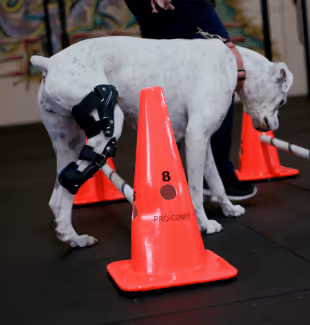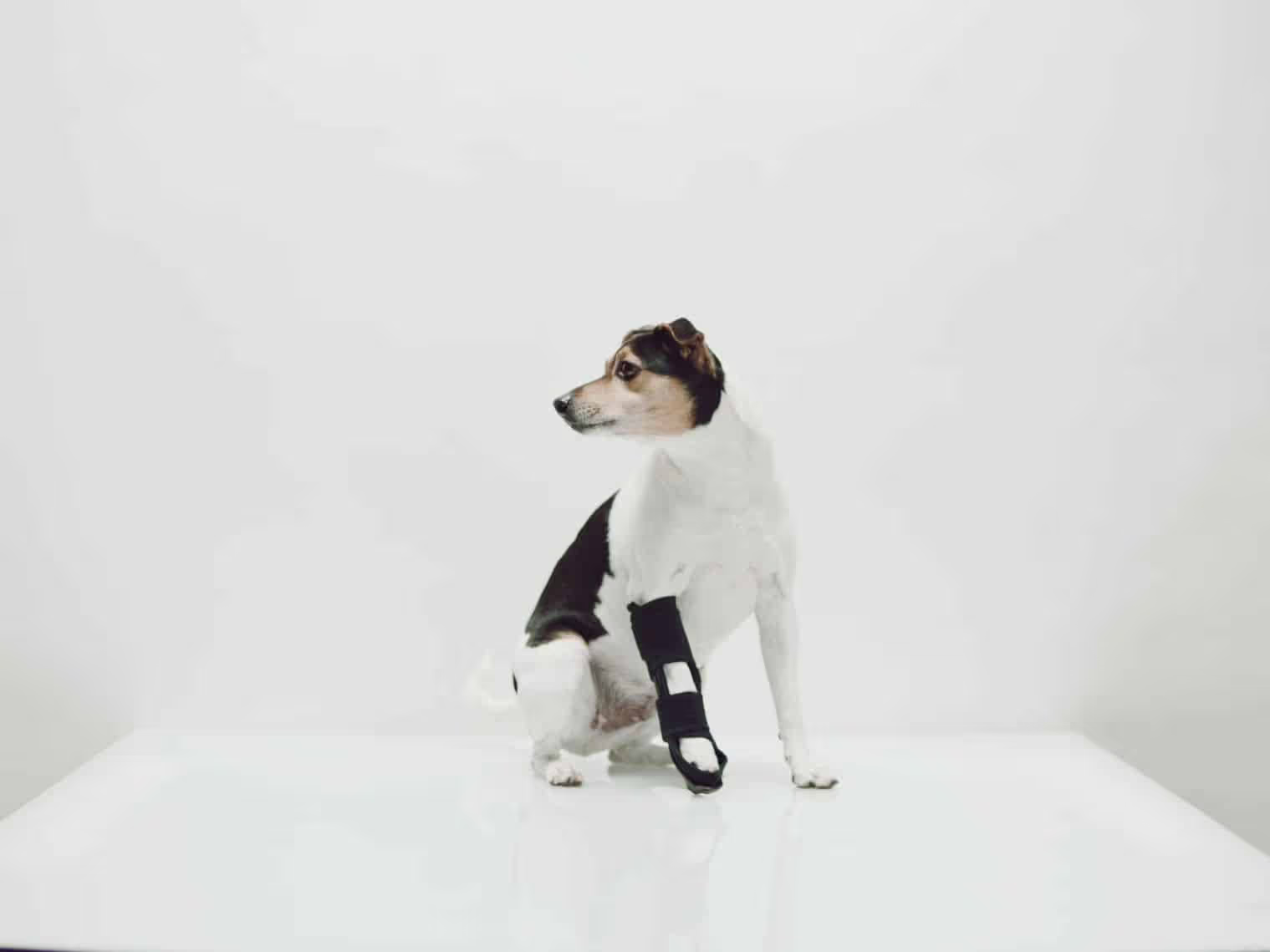V-OP 101: Getting Started
Why V-OP is Important to Your Practice
- Benefit to client and patient
- It provides diagnosis, treatment plan, medical support, and guidance for underserved population.
- It provides solutions where none existed before.
- It provides clients from obtaining inaccurate information, medical advice, and medical devices from nonveterinary sources.
- It provides ongoing professional care for the V-OP patient to ensure continued proper use of device.
- Benefit to veterinarian
- These are extremely rewarding cases from a professional standpoint.
- It provides innovation and cutting edge therapies to your community.
- Benefit to veterinary clinic
- V-OP clients are deeply grateful and bonded to the clinic providing a solution when there had been none before.
- These are unique patients who garner MUCH attention in the community as people wonder “what is that device?”
- There is much opportunity for traditional and social media exposure because these are interesting cases.
- A new revenue stream is created from a large population of animals who are not surgical candidates or whose surgery requires additional support.
- An entirely different population of animals that will benefit from prosthetic limbs is created when subtotal amputation is chosen over total amputation.
- In the case of long-term device use, twice-annual appointments bring the client into the clinic for continued support over years. These appointments are comprehensive and should be scheduled separately. They include evaluation of therapeutic plan, wearing schedule, activity, concerns, skin condition, device condition, and rehabilitation plan if appropriate.
Primary health care veterinarian responsibilities:
- Diagnose presenting orthopedic issue
- Create therapeutic plan
- Device prescription with the support of V-OP fabricator; such durable medical devices should never be provided without the prescription and care of a veterinarian with a valid doctor, client, patient relationship.
- Rehabilitation prescription, implementation, and supervision.
- Management of device long-term therapeutic plan as needed.
Finding a V-OP Fabricating Partner
V-OP are custom-made from a fiberglass impression of the patient's limb after a diagnosis and complete biomechanical evaluation, and therapeutic plan are established. This is in contrast to off-the-shelf support wraps, splints or braces, or wheeled devices, which may or may not provide the proper therapeutic support and do not come with professional veterinary advice. Custom device design is unique based on the individual corrective needs, conformation, abilities, and environment of the patient. Manufacturing requires a firm understanding of quadruped bio-mechanics and skilled modification to accommodate limb top- ography, create appropriate corrective forces, and provide sufficient malleability to adjust as needed. V-OP is a hands-on therapy; each case should be managed carefully from diagnosis to device application to rehabilitation using a cohesive team approach. The ideal team includes the pet owner, the family veterinarian, a certified rehabilitation therapist, and a V-OP specialist skilled in custom design, fabrication, and fitting of devices for the intended species.The advantages afforded by custom orthoses and prostheses include (1) reduction and immediate management of coaptation- related wounds; (2) management of primary pain generators associated with functional impairments; (3) improvement of biomechanics, allowing for greater activity and a significant decrease in compensatory pain; (4) return to active lifestyle, resulting in decreased obesity and associated comorbidities; (5) improvement in quality of life and functional independence, both of which can prevent premature decision to euthanize; and (6) the availability of treatment options where none existed before.As of this writing, there are at least 12 companies offering veterinary-specific orthoses, prostheses, or assistive devices listed on the internet. However, there are opportunities to learn about V-OP at local and national veterinary meetings, and a continuing education course is offered through the Canine Rehabilitation Institute. There is as yet no certification for V-OP. Also, there are no regulating bodies and no requirements for V-OP fabricators at this time. H-OP has no practice act limiting scope of practice to which practitioners must adhere. Although human devices require prescription, the same cannot be said for any nonhuman patient. In addition, veterinary practice acts do not specify prescription or a valid doctor, patient, and client relationship for the use of V-OP devices. Keeping in mind veterinary practice acts have only recently addressed acupuncture, chiropractic, and rehabilitation, such clarification is likely forthcoming for V-OP. Until that time, clients can order and use such devices without the guidance of the veterinarian. Likewise, until regulations and limitations exist, the onus rests with the attending veterinarian to advocate for client and patient by ensuring proper, safe, appropriate prescription, and guidance in the use of these devices. Because clients will seek these devices with or without veterinary support, it behooves the veterinarian to participate in this process.When choosing a fabricator, the following questions should be asked:(1) What is the qualification of the fabricator? Many companies are founded by H-OP practitioners; this is a good start. The certifying organizations for this profession are the American Board of Certification-OP and the Board of Certification. Currently, these are voluntary certifications and as such not all H-OP practitioners are adequately trained and certified. These certifications are considered a minimum.(2) What is the fabricator's veterinary caseload? Do they work with animals exclusively or work with animals as a side business? Working with animal patients is not the same as working with human patients because of the vastly different biomechanics of the quadruped. Just as cats are not small dogs, and chihuahuas are not small greyhounds, quadrupeds are absolutely not small people on all fours. Veterinary species are tremendously diverse and challenging. Therefore, a fabricator should have a great deal of veterinary patient experience before providing a device for any companion animal.(3) Does the fabricator require a prescription from a veterinarian with a valid doctor, patient, and client relationship?(4) Does the fabricator have a close working relationship with a veterinarian who can provide consultation and guidance regarding animal health, locomotion, behavior, wound management, and rehabilitation?(5) Does the collaborating veterinarian have advanced training in sports medicine, rehabilitation, and V-OP? There are several interest groups and specialty boards providing certification and continuing education for veterinarians. These include, but are not limited to, the Veterinary Orthopedic Society, the American College of Veterinary Sports Medicine and Rehabilitation, the American Association of Rehabilitation Veterinarian, the Canine Rehabilitation Institute, and the University of Tennessee. Association with such organizations is ideal for any veterinarian providing consistent consultation to any V-OP fabricator.




